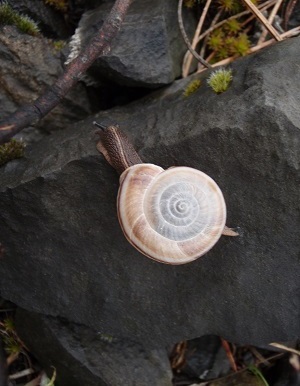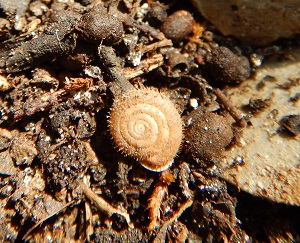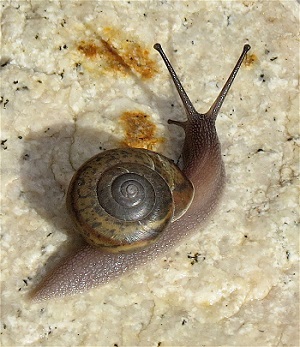 Today, we celebrate snails-- an essential, endangered, and understudied component of our state’s terrestrial and aquatic ecosystems. Non-marine mollusks, including freshwater and land snails, are the most imperiled group of animals on our planet: 41% of recorded extinctions from 1500-2004 were of non-marine mollusks. Unrecorded extinctions may be significantly higher, as the conservation status of less than 2 percent of mollusk species has been adequately assessed (
Today, we celebrate snails-- an essential, endangered, and understudied component of our state’s terrestrial and aquatic ecosystems. Non-marine mollusks, including freshwater and land snails, are the most imperiled group of animals on our planet: 41% of recorded extinctions from 1500-2004 were of non-marine mollusks. Unrecorded extinctions may be significantly higher, as the conservation status of less than 2 percent of mollusk species has been adequately assessed ( Furnish 2007, 2014).
Furnish 2007, 2014).
Aquatic mollusks have been devastated by over a century of dams, diversions, water pollution, and other anthropogenic impacts. Conserving freshwater mollusks, including snails, is critically important to the health of our rivers and streams, as these species play a vital role in reclaiming water quality.
 Approximately 240 land snails (and slugs) are native to California, including many endemic species. "Terrestrial snails are important components of our forests and woodlands," says ecologist Len Lindstrand. "They decompose litter, recycle nutrients, build soils; and provide food and calcium for birds, amphibians, reptiles, small mammals, and other invertebrates." Land snails can be found in desert environments as well, as attested by snail expert Dave Goodward. Finding these species takes patience; to conserve precious body moisture, they emerge from cover only when conditions are right, often at night. Finding the snail is just the beginning of the challenge: "Telling the different species apart is maddeningly difficult," says Goodward. He found the "lovely snail" pictured below in the Piute Mountains of Kern County. It was similar to a badger shoulderband, but may prove to be an undescribed, narrowly endemic species.
Approximately 240 land snails (and slugs) are native to California, including many endemic species. "Terrestrial snails are important components of our forests and woodlands," says ecologist Len Lindstrand. "They decompose litter, recycle nutrients, build soils; and provide food and calcium for birds, amphibians, reptiles, small mammals, and other invertebrates." Land snails can be found in desert environments as well, as attested by snail expert Dave Goodward. Finding these species takes patience; to conserve precious body moisture, they emerge from cover only when conditions are right, often at night. Finding the snail is just the beginning of the challenge: "Telling the different species apart is maddeningly difficult," says Goodward. He found the "lovely snail" pictured below in the Piute Mountains of Kern County. It was similar to a badger shoulderband, but may prove to be an undescribed, narrowly endemic species.
 Curious to learn more about these enigmatic creatures? Try looking up the work of our state’s foremost land snail expert Dr. Barry Roth, who co-authored the
Curious to learn more about these enigmatic creatures? Try looking up the work of our state’s foremost land snail expert Dr. Barry Roth, who co-authored the  Checklist of the Land Snails and Slugs of California. For a list of snails and slugs tracked in CNDDB, check out the
Checklist of the Land Snails and Slugs of California. For a list of snails and slugs tracked in CNDDB, check out the  Special Animals List on our website. Happy trails!
Special Animals List on our website. Happy trails!
Photo 1: Monadenia troglodytes wintu by Len Lindstrand
Photo 2: Trilobopsis roperi by Len Lindstrand
Photo 3: Helminthoglyptha sp. By Dave Goodward